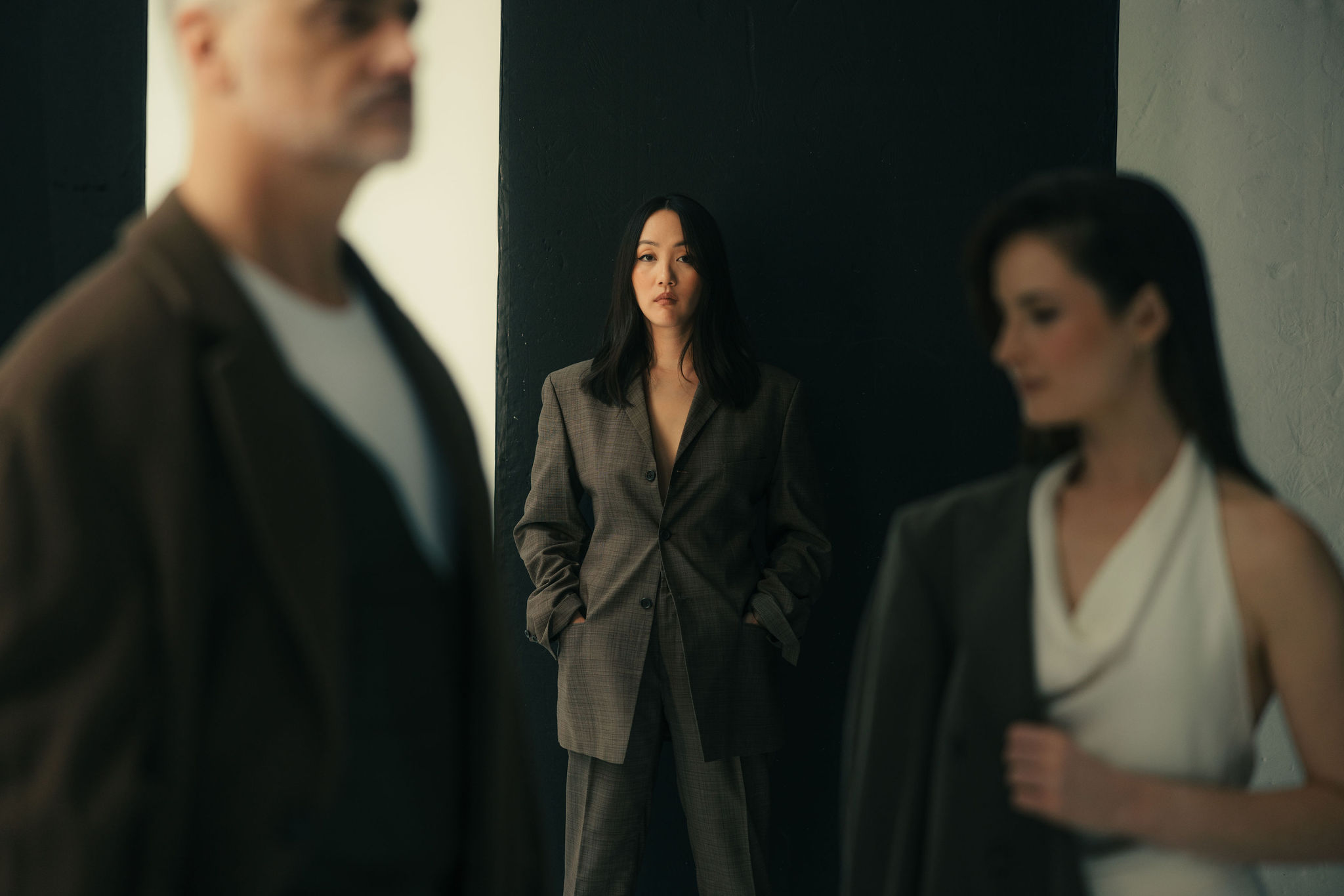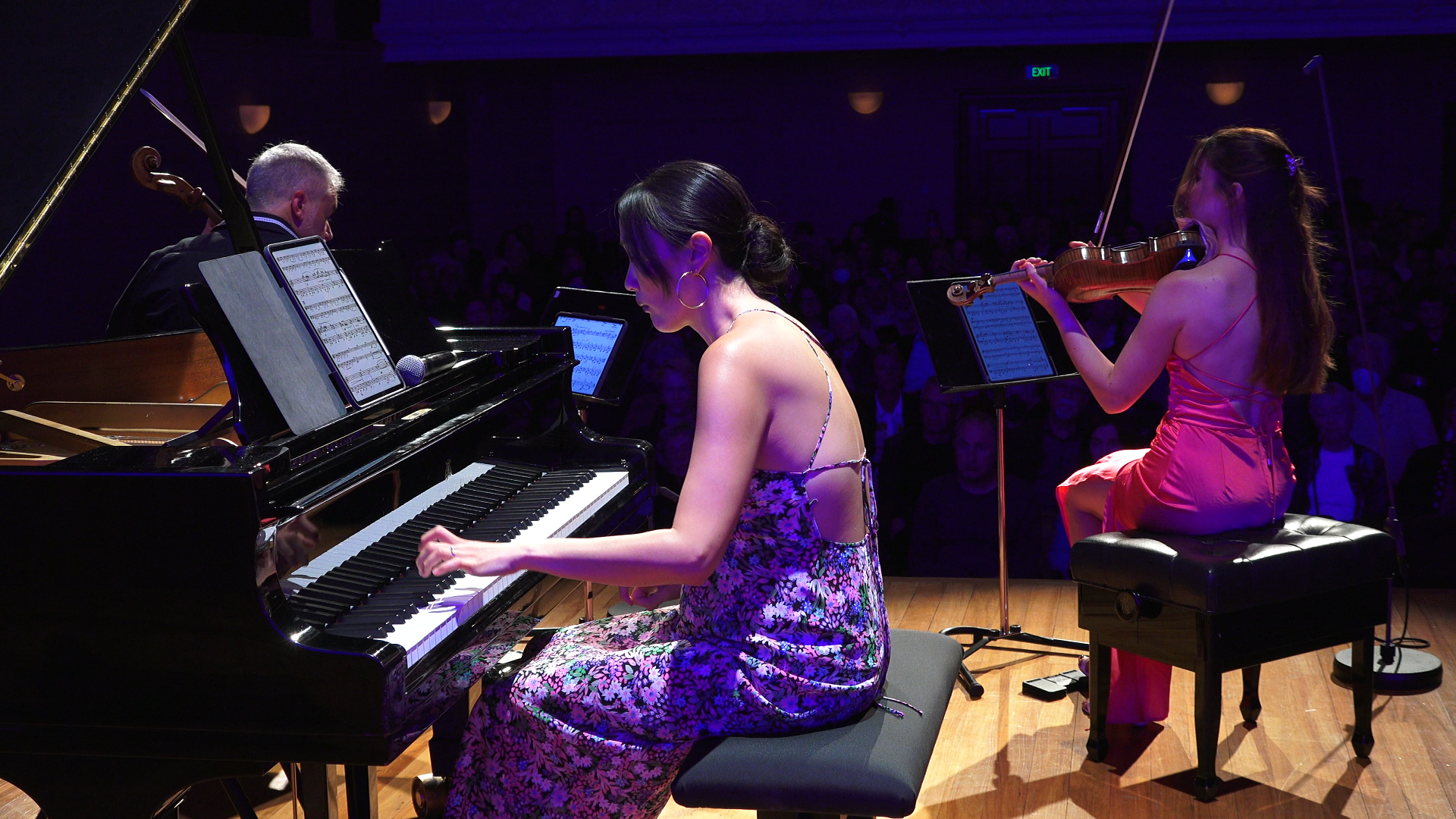Mondo Rondo (Arranged for NZTrio 2012) – c. 12′
Triple Concerto for Piano Trio and Orchestra (2006) – c. 25′
Mondo Rondo (Arranged for NZTrio 2012) – c. 12′
Triple Concerto for Piano Trio and Orchestra (2006) – c. 25′
Mondo Rondo
Gareth writes: “Mondo Rondo was originally written for string quartet and appears on this programme in its new incarnation, re-arranged for NZTrio. Its three movements are quirky and characterful, and take their inspiration from sources as disparate as Bartók and Balinese marching music.
The first movement, Mondo Rondo, is a slightly wonky homage to some of the composers who have inspired me – namely Béla Bartók, Sergei Prokofiev, and Dmitri Shostakovich. By no means is it an homage to be taken seriously though. At the premiere I was in the audience, and at one particularly comical cello pizzicato I laughed out loud – several audience members turned around glaring, as if to say “Who IS this philistine?”
Mumbo Jumbo begins as a study in pizzicato, and I employ the technique of hocketting, whereby the tune is built up from a few notes contributed by each instrument in turn – an effect which sounds something like the mbira (African thumb piano) but is in fact more inspired by beleganjur, Balinese funeral marching music – a loud crashy rhythmic mix of cymbals and gongs, intended to frighten the demons away.
Apparently at the recording session for my String Quartet CD, I announced that the third movement, Mambo Rambo, was a product of my ‘Moroccan Period’. I don’t recall saying this, but the scales, hypnotic rhythms and melodies definitely have a flavour of the area. However, once I get stuck in a loop, I tend to get bored so, as in most of my work, the music continually interrupts and falls over itself, like a drunk at a dinner party.”
Triple Concerto
On the whole the piece is tonal, displaying noticeable signs of my love for Prokofiev and Shostakovich – especially their orchestral works. All three solo parts are extremely virtuosic: the piano part in particular uses many virtuoso techniques that are found in the Prokofiev piano concertos, and if you watch the pianist youwill see her flying about the keyboard at times. The second movement differs significantly in mood to the outer movements; it is less tonal and is, in fact, more romantic. It features the vibraphone in the percussion section, and has a somewhat eerie feel to it.
As he was writing the concerto, Farr says he came to understand why there are so few triple concertos in the repertoire. “With the piano taking the harmony, the violin the melody, and the cello taking a countermelody, there is very little left for the orchestra to do!” He solved the problem in various ways: ‘”I let the trio play as if it was chamber music, there are tutti passages where the trio plays in balance with the orchestra, and then orchestral passages where the trio drops out and the orchestra goes wild!”
Originally commissioned by the University of Waikato in celebration of the opening of the WEL Energy Trust Academy of Performing Arts, in its first incarnation the Triple Concerto was a single-movement work of ‘overture’ score and duration. It was composed for the Turnovsky Trio, who were to be Artists-in-Residence at the Academy. In 2005, Farr received a commission from NZTrio to expand the concerto into a full-length work.
For more information visit: Gareth’s website

